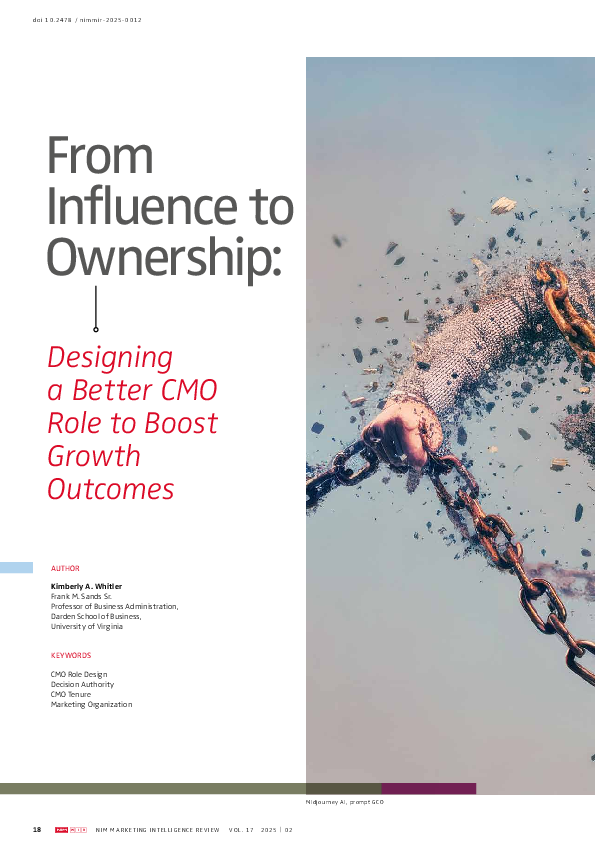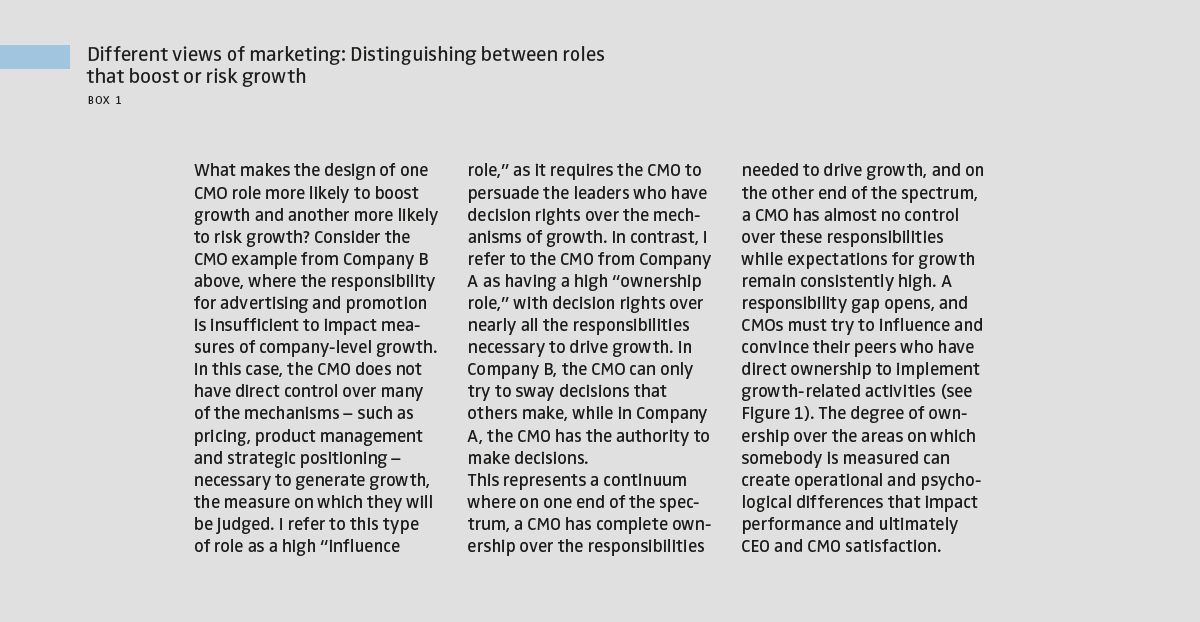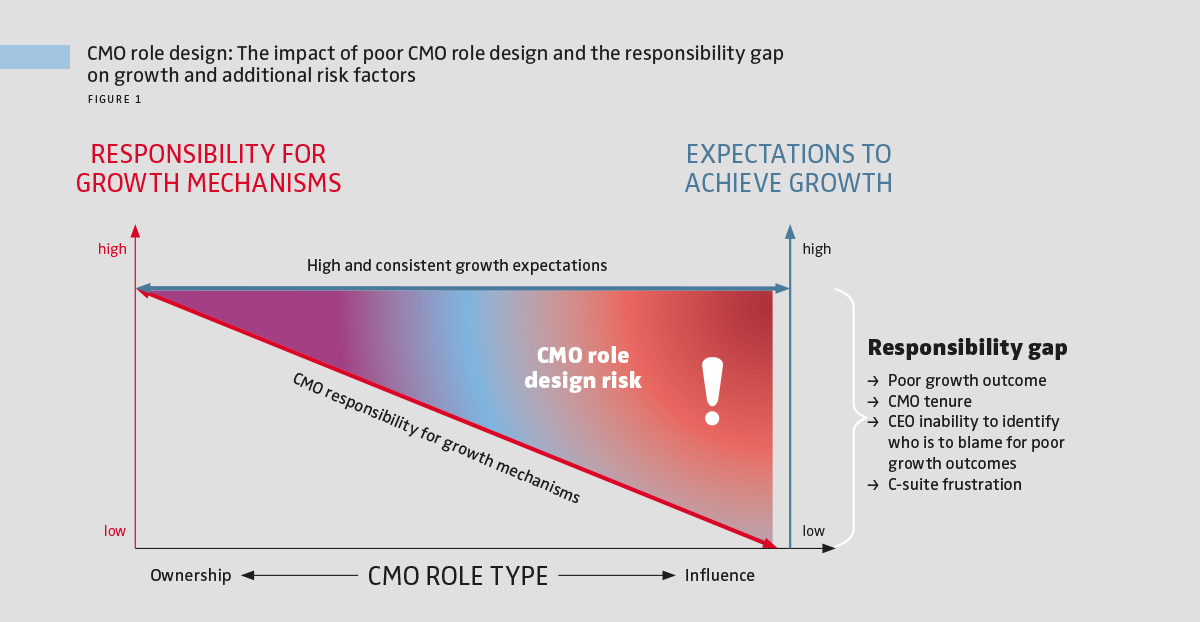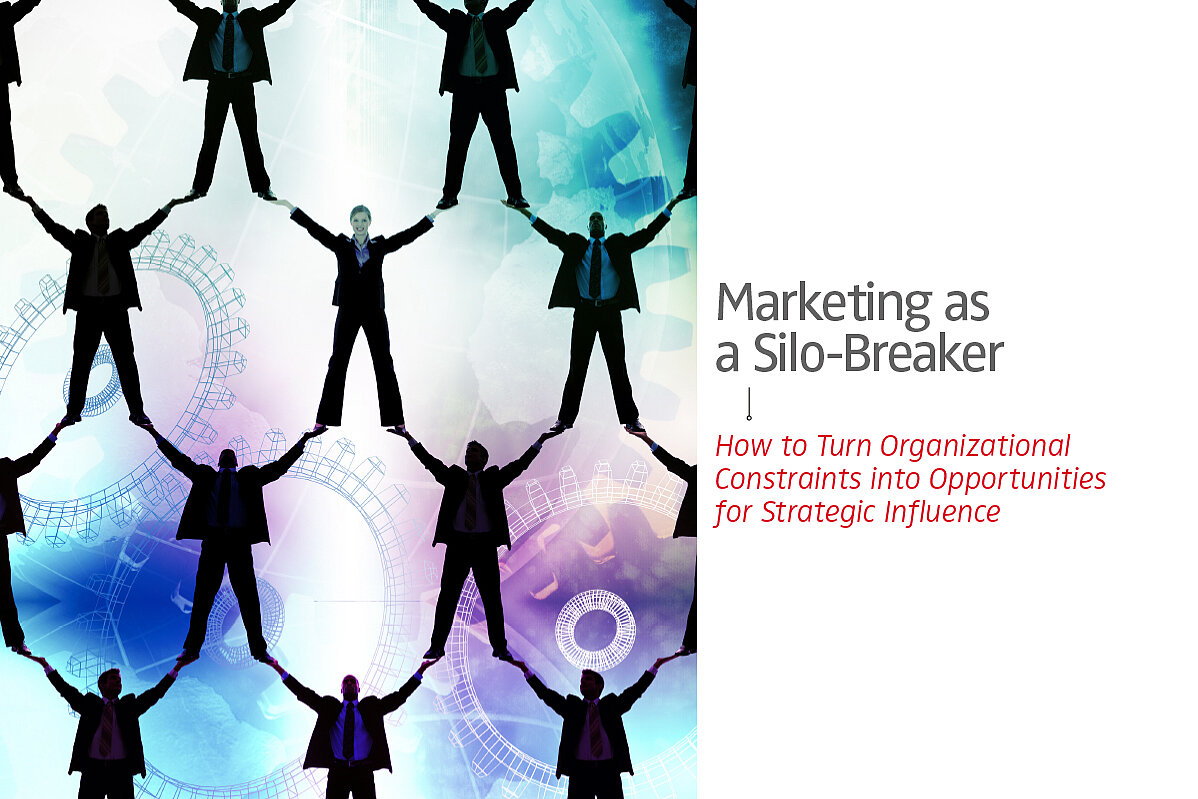From Influence to Ownership: How CMO Role Design Shapes Business Success
Managers and scholars agree that the role of marketers, above and beyond all other functions, is to create sustainable, profitable growth. Accenture indicates that CEOs primarily turn to CMOs to drive growth, and McKinsey reports that 83% of global CEOs believe marketers are a major source of growth. Despite the consistent expectation that marketers drive growth, there is significant variance in the design of CMO roles, and in particular, the scope of responsibilities assigned to them. For example, the CMO in Company A may be assigned responsibility for marketing strategy, brand strategy, pricing, actuarial analysis, product design, research and analytics, public relations and internal and external communications. In this case, the CMO has primary control over most of the levers needed to generate profitable growth. At Company B, however, the CMO only has ownership over downstream advertising and promotion programs. Although the CMO has been told that they are responsible for driving growth, their leadership over determining the growth strategy and ownership over the drivers of growth is nominal.
A mismatch between CMO responsibility and measures of accountability is common
A “best practice” when designing roles is to align responsibilities and duties with the measures against which they are assessed. To use a vivid example from outside of the business realm, consider how basketball point guards tend to be measured: assists, field goal percentage, turnovers, steals and so forth. They are not typically measured on blocked shots, post scoring, rebounds or other statistics more relevant to forwards and centers. The goal is to identify those activities over which the point guard has control and then measure their performance on those – and only those – activities. The same goal would be expected in a marketing context: a desire to synchronize the CMO’s territory of responsibility with the measures against which they are held accountable, such that the two are the same. However, my research together with colleagues indicates that this is not always the case, and that the level of incompatibility and hence poor role design isn’t trivial: 33% of CFO, CMO and CIO jobs have responsibilities and job expectations that are not compatible. and more than 50% of CMO jobs are misaligned. Unfortunately, poor role design is rarely obvious to leaders. Instead, they commonly blame weak performance on the individual occupying the role, rather than exploring whether the CMO has a well-designed role to begin with. High CMO turnover can result, as frustrated CEOs fire their CMOs or discouraged CMOs leave to seek better circumstances. Indeed, much has been written about the fact that CMOs have consistently had the shortest tenure in the C-suite. A key contributor to the CMO short tenure challenge is poor CMO role design, which makes it very difficult for CMOs to effectively drive growth.
The risks of poorly designed CMO roles
What happens when responsibility and measures of accountability don’t cohere? A mismatch between the two can create frustration for the individuals involved and, more importantly, hinder their ability to achieve the desired outcomes. The job shifts from one in which the CMO has primary authority over the areas on which they are held accountable to one in which they don’t.
Despite the consistent expectation that marketers drive growth, there is significant variance in the design of CMO roles.
> Higher risk to achieve business growth
From an operational perspective, performance outcomes become riskier as a CMO shifts from an ownership to an influence role, as they have reduced ability to control decisions, and there is increased cost associated with trying to align other functions. As a CMO shifts toward an influence role, they must take time to “sell” their ideas to peers, drive alignment and coordinate execution. Because the CMO doesn’t have ownership, the decisions made by their peers may not be the ones that the CMO would have chosen if given authority. Assuming that the CMO is the best equipped to identify and deliver value-creating growth opportunities, giving responsibility to others in a company may lead to less effective decision-making. In addition, the increased “politicking” associated with an influence role can result in inefficiency that impacts performance outcomes. The time a CMO spends developing presentations to sell and influence peers comes at a cost. That time could have been spent on developing and executing plans rather than on influencing decision-making. This issue can be exacerbated if the functions with authority are not incentivized to cooperate and instead resist. It increases the difficulty marketers face in trying to influence the outcomes. The job can be more challenging without ownership as the energy, effort and skill required to persuade others who have decision rights to follow the CMO increases.
> Discouraged and frustrated CMOs
From a psychological perspective, when an individual is held accountable for outcomes over which they have little agency – typical for influence roles – they can experience anything from frustration to learned helplessness trying to impel the functions with decision rights. The frustration of misalignment can transcend CMOs. The marketing function can grow frustrated with having little agency. The functions with decision rights may grow frustrated by CMOs trying to influence them. CEOs may grow frustrated with the lack of results. All these effects can help explain short CMO tenure.
> Unclear accountability
When growth suffers and company performance is at risk, who should the CEO hold accountable? Is it the CMO’s fault because the desired outcome wasn’t delivered? Is it the fault of the individuals who had ownership over key levers of growth? Or is it the CEO’s fault, as all the levers come together at the CEO level? At a fundamental level, it is easier to hold people accountable when they have ownership.
How an influence role differs from typical cross-functional alignment
It is critical to distinguish the ownership-influence dichotomy from the typical cross-functional alignment that exists regardless of who owns specific responsibilities. Within companies, there is always the need to align and coordinate activities so everyone operates in unison. This is different, however, from responsibility-accountability alignment. Although point guards on basketball teams are not held accountable for certain measures that others are responsible for, they must coordinate and work with the rest of the team to ensure the best overall outcomes.
The more that CMOs are given influence roles and held accountable for outcomes over which they have no authority, the greater the misalignment between responsibility and accountability, and the greater the potential risk to company performance outcomes through inefficiency or suboptimal decision-making.
Steps that leaders can take to leverage CMO role design to boost company outcomes
There are three key actions that CMOs, CEOs and Boards of Directors can take to reduce risk and boost performance outcomes through better CMO role design.
> CMOs should assess their role and negotiate if necessary
Prior to accepting a job, CMOs should identify the degree to which they will have ownership over the levers of growth. If the role design creates risk through high influence expectations, CMOs can highlight the gaps and recommend either: 1) shifting ownership so the CMO has greater responsibility, or 2) shifting accountability so the functional leader who has ownership also has shared responsibility. CMOs can increase awareness of the risk associated with poor CMO job design by sharing their insight with both executive recruiters and CEOs. Once all key parties are made aware, CMOs can then negotiate to design a role that increases the likelihood of success.
> CEOs should assess where their CMO’s role sits on the ownership-influence continuum and address high-risk scenarios
Wherever possible, CEOs should work with executive recruiters and CHROs to ensure that CMO positions are appropriately positioned on the ownership-influence continuum. As an example of a method to assess performance, assume that a CMO is being held accountable for driving growth outcomes. Leaders should list the drivers of growth and then identify how many are assigned to the CMO. To the extent that the CMO doesn’t own many of the growth mechanisms, the role design increases risk and provides an opportunity for CEOs to finesse the design to lower risk.
> Board members can help enhance governance by making sure that CMOs are engaged in appropriate board-level discussions
Assuming, for example, that a company’s CMO is expected to drive growth, any board-level discussions regarding growth strategy or resource allocation should involve the CMO. This ensures that the CMO is involved in all related board-level discussions that influence the strategies and resources that will impact growth outcomes. It also drives alignment on growth strategies between the CMO, CEO, the C-suite and the Board of Directors.
In professional basketball, success requires a capable general manager who oversees resource allocation and a strong coach who defines clear roles for each player, so that the team can operate effectively as a system. In business, the board oversees resource allocation, and the CEO must assign clearly defined and coherent roles. This is a precondition for CMOs to achieve performance goals and for the C-suite, more broadly, to function effectively.
FURTHER READINGS
Accenture. (2018). CMO collaborators fill the gap in the C-suite to drive business growth, Accenture interactive research finds.
Boudet, J., Cvetanovski, B., Gregg, B., Heller, J., & Perrey, J. (2019). Marketing’s moment is now: The C-suite partnership to deliver on growth.
Gartner. (2024). Gartner HR research finds CEOs rank workforce as a top three business priority, behind growth and technology.
Ferry, K. (2019). Age and tenure in the C-suite.
Whitler, K. A., Rego, L. L., & Morgan, N. A. (2025). Chief marketing officer role design. Journal of the Academy of Marketing Science. Advance online publication. https://doi.org/10.1007/s11747-025-01104-6
Whitler, K., Tazzia, E., & Mann, S. (2022). Set up to fail. Sloan Management Review.












